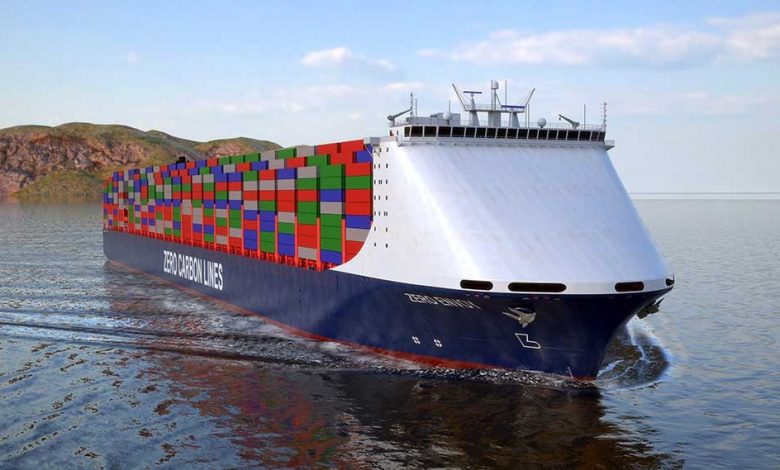ABS sets out its decarbonisation vision to 2050

During the Nor-Shipping exhibition yesterday class society ABS launched a guide on how shipping might meet its decarbonisation goals for 2030 and 2050. The detailed 69-page report is designed to give clients the chance to evaluate potential pathways to low carbon shipping.
Key findings from the report include ABS’s feeling that 2030 targets can be met through operational measures such as slow steaming and efficiencies driven by connectivity and data analytics and energy efficient designs. 2050 goals, however, remain a far greater challenge with the conceptual designs ABS has created for the report (pictured) showing that today’s fuel technology does not meet the 2050 demands.
Estimated carbon intensities using IMO and UNCTAD data show the scale of the challenge. Ships in 2008 were getting through 22 grams of CO2 per ton mile. By 2015, as recession bit into operations, this figure had fallen to 15.2 grams. By 2030 the carbon intensity figure will need to be 13.2 grams, but by 2050 it will need to be just 6.6 grams based on today’s 2050 IMO goals, which, of course, could become more draconian in the years ahead.
To fully understand what it will take to adopt alternative fuels globally, ABS compared the development of LNG as fuel noting that it has taken 10 years for LNG bunkering infrastructure to develop and supply less than 1% of the global fleet. Other alternative fuels will face similar infrastructure development, regulatory and supply chain challenges, ABS warned.
“Despite all the noise and confusion about IMO 2020, the disruption from the global sulphur cap is likely to be dwarfed by what comes after it. The greatest challenge of our generation – and the next – will be the decarbonisation of the shipping industry,” said Christopher Wiernicki, ABS chairman.
Speaking at a press conference yesterday Kirsi Tikka, executive vice president, global marine at ABS, said that the magnitude of the challenge to slash emissions by 50% compared to 2008 levels meant that shipping needed to set the course for this decarbonisation drive today.
Tikka said there’s a life cycle risk when an owner makes an order today as regulators change rules, charterers change their demands and the general public becomes more aware of shipping and pressures for greater change.
Tikka admitted that today no one fuel proposition is in pole for 2050.
“We really do not have a very good line of sight to 2050,” she said, adding that she believed ships of the future will operate slower than today.
Splash readers can access the report by clicking here.
